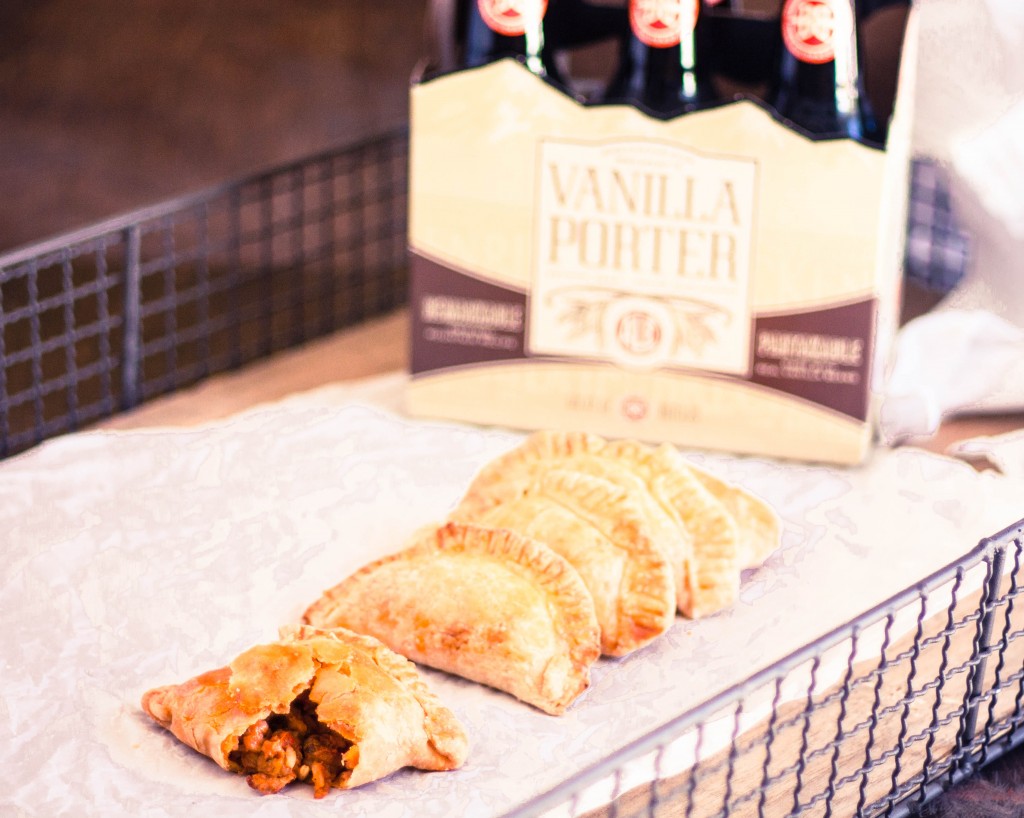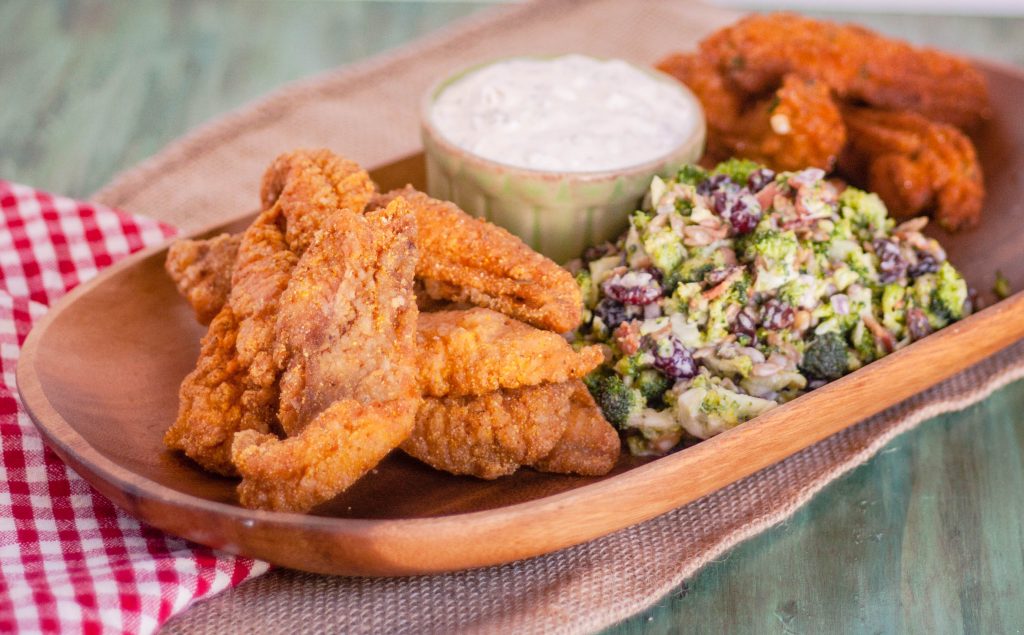
There are some meals that transport you straight back to a place, a moment, a feeling. A good pot of gumbo does just that. Every bite carries the deep, smoky richness of a well-made roux, the spice of andouille sausage, and the subtle sweetness of tender shrimp. It’s a meal that sticks to your ribs and warms the soul—whether you're cooking for a Mardi Gras feast, a family gathering, or just because you need a taste of home.
But gumbo is more than just food. It’s history. It’s a story in a bowl, one that carries echoes of Creole and Cajun traditions, of bayou kitchens and Sunday suppers, of laughter, love, and a whole lot of patience. Because let’s be honest, making gumbo ain’t fast food. But that’s what makes it special.
Why You’ll Love This Recipe
- Authentic Cajun Flavor – This gumbo starts with a proper roux, cooked low and slow until it’s a deep, nutty brown that gives the dish its signature richness.
- Perfect for Gatherings – A big pot of gumbo feeds a crowd, making it ideal for family get-togethers, tailgates, or cozy weekends at home.
- Layers of Flavor – The combination of shrimp, sausage, and classic Cajun spices creates a depth of flavor that only gets better with time.
- A True Southern Classic – Whether you're a Louisiana native or just a lover of good food, this gumbo brings the spirit of Creole cooking to your kitchen.
The Story & Culture Behind the Dish
Ask any Cajun or Creole cook about gumbo, and you’ll get a different answer every time. Some will swear by a seafood gumbo packed with shrimp and crab, others stick to a chicken and sausage version. Some use okra, others rely on filé powder. But one thing everyone agrees on? Gumbo is sacred.
Gumbo is the very definition of a cultural melting pot, a dish born from necessity and adapted by generations who made the most of what they had. Its roots trace back to Louisiana, where influences from French, Spanish, West African, and Native American cooking traditions intertwined, creating a stew that was equal parts survival and celebration.
The word “gumbo” itself is believed to come from the West African term for okra, “ki ngombo,” reflecting the ingredient’s traditional use as a thickener in the dish. As the recipe evolved, so did the methods of thickening—some relied on okra, others on filé powder, a seasoning made from ground sassafras leaves introduced by Native Americans. No matter the variation, gumbo became a cornerstone of Louisiana cuisine, reflecting the resourcefulness and resilience of the people who made it.
And like any good Southern dish, gumbo isn’t just about the ingredients—it’s about the memories tied to it. Growing up in Texas, Cajun food was never far from reach. My first memory of a truly unforgettable Cajun meal takes me back to Pe-Te’s Cajun Barbecue House, a Houston-area gem that served up heaping plates of Cajun barbecue, the best dirty rice, boudin, and hot bowls of gumbo you could ask for. We lived in Clear Lake, a suburb of Houston, not far from Ellington Field. My Uncle Bill, who spent over 38 years in the Army and National Guard, often came down to Ellington for drill weekends, and when he did, he made sure we met him at Pe-Te’s for a meal.
Pe-Te’s wasn’t just a restaurant—it was an institution. A converted gas station painted in wild shades of purple, it had walls covered in thousands of license plates from every corner of the world and autographed photos of astronauts who had stopped in for a meal. You could hear the zydeco music spilling out before you even opened the door, the infectious rhythm of accordion and washboard setting the tone for the feast ahead. Inside, the hum of conversation mixed with bursts of laughter as families and friends gathered around long, communal tables, piling their plates high with smoky brisket, spicy boudin balls, and, of course, steaming bowls of gumbo.
My Uncle Bill, a man who never let you leave a meal hungry, introduced me to boudin at Pe-Te’s. He taught me how to scoop out the spicy, savory filling onto a saltine cracker, topping it with just enough hot sauce to make your eyes water. He was generous like that—always making sure you had a full plate and an even fuller heart.
When Pe-Te’s finally closed its doors after decades of business, it felt like losing a piece of history. The zydeco music went silent, the license plates no longer clattered against the walls, and the smell of smoky Cajun spice disappeared into memory. But the flavors, the warmth, and the stories live on in the food we cook today.
Equipment You’ll Need
- Large Dutch oven or stockpot – Essential for simmering your gumbo to perfection.
- Wooden spoon – Helps stir the roux without burning.
- Cutting board & sharp knife – For prepping all your veggies and proteins.
- Measuring cups & spoons – Precision matters, especially for the roux.
Ingredients You’ll Need
- Shrimp – Fresh or frozen, peeled and deveined.
- Andouille Sausage – Smoky, spicy, and full of flavor.
- The Holy Trinity (Onions, Bell Pepper, Celery) – The backbone of Cajun cooking.
- Chicken Broth – Forms the base of the gumbo.
- Flour & Oil – For making that essential dark roux.
- Cajun Seasoning – Tony Chachere’s is a solid choice.
- Bay Leaves & Thyme – Adds depth to the broth.
- Tabasco & Cayenne Pepper – A little heat goes a long way.
- Cooked Rice – Because gumbo isn’t complete without it.
Instructions
1. Prepare the Sausage
- Slice the sausage into thick rounds.
- In a large Dutch oven, heat a little oil over medium heat and brown the sausage. Remove and set aside.
2. Make the Roux
- In the same pot, add oil and heat until shimmering.
- Stir in flour and whisk continuously over medium-low heat until it reaches a deep brown color, about 15 minutes.



3. Build the Flavor Base
- Add the chopped onions and cook until softened.
- Stir in bell pepper, celery, and garlic, cooking for a few minutes until fragrant.
- Add Cajun seasoning, Tabasco, and cayenne pepper.
4. Simmer the Gumbo
- Slowly pour in the chicken broth, stirring constantly.
- Add bay leaves, thyme, and the browned sausage.
- Bring to a simmer and let cook for 45 minutes.
5. Add the Shrimp
- Stir in the shrimp and green onions.
- Cook for 5 minutes, until shrimp turn pink.
- Remove bay leaves and serve over hot cooked rice.
This post may contain affiliate links. I may receive commissions for purchases made through links in this post.
Visit my Amazon Store for everything you need to cook up a storm, bake delicious treats, and whip up your favorite beverages!
Chef Secrets & Tips
Perfecting the Roux
- Stir constantly. Seriously, don’t walk away. A good roux can go from golden brown to burnt in a heartbeat.
- Use a heavy-bottomed pot. A Dutch oven distributes heat evenly, preventing scorching.
- Choose the right oil. Peanut or canola oil works best, as they have high smoke points.
Troubleshooting & Fixes
- Roux burned? Unfortunately, there’s no saving it—start over. A burnt roux will ruin the entire dish.
- Too thin? Simmer longer or add a flour-and-water slurry to thicken.
- Too thick? Add more broth in small increments until you reach the right consistency.
Balancing Flavors
- Taste as you go. Adjust salt, spice, and acidity to your preference.
- A squeeze of lemon juice right before serving brightens the flavors.
- Need more depth? A splash of Worcestershire sauce or a dash of smoked paprika can do wonders.
Ingredient Quality & Selection
- Shrimp: Look for wild-caught Gulf brown shrimp for the best flavor.
- Sausage: Andouille is traditional, but a good smoked sausage works too.
- Stock: If you can, make homemade shrimp stock by simmering shrimp shells with aromatics.
Enhancing Texture & Presentation
- Serve over fluffy white rice. Each grain should remain separate to soak up the broth.
- Garnish with fresh green onions. A sprinkle of filé powder at the table enhances the dish.
- Pair with cornbread or crusty French bread to soak up every last bit.
Storage & Reheating Tips
- Refrigerate: Store in an airtight container for up to 3 days.
- Freeze: Freeze in portions for up to 3 months.
- Reheat: Warm gently on the stovetop, adding a splash of broth if needed.
Gumbo isn’t just food—it’s tradition. It’s the kind of dish that brings people together, whether it’s around a rickety table at a roadside Cajun joint or in your own kitchen on a chilly evening. So take your time, enjoy the process, and most importantly—don’t forget to share it with someone you love.
Because if there’s one thing I’ve learned from Uncle Bill and nights spent at Pe-Te’s, it’s that the best meals are the ones that come with a story.

More Cajun Favorites
Cajun cuisine is full of bold flavors, rich traditions, and comforting dishes that bring people together. If you loved this gumbo, here are more Cajun classics to try:

Cajun Red Beans and Rice – A hearty, slow-cooked dish made with creamy red beans, smoked sausage, and plenty of Cajun seasoning, served over fluffy white rice.

Creamy Crawfish Étouffée – A rich and buttery dish featuring crawfish tails smothered in a flavorful roux-based sauce with the holy trinity of Cajun cooking—onions, bell peppers, and celery.

Shrimp and Cheese Grits – A Southern staple with a Cajun twist, featuring tender shrimp sautéed in a spicy, smoky sauce served over creamy, cheesy grits.

Grillades and Grits – A Louisiana brunch favorite of slow-braised beef or pork medallions simmered in a spicy tomato gravy, served over buttery grits.

Seafood Gumbo – A deep, flavorful gumbo loaded with shrimp, crab, and sometimes oysters, thickened with a dark roux and served with rice.

Crawfish Hand Pies – A flaky, golden pastry stuffed with a spicy crawfish filling, perfect for a handheld bite of Louisiana goodness.

Cajun Fried Catfish – Light, crispy, and perfectly seasoned catfish fillets fried to golden perfection and served with tangy tartar sauce and hush puppies.

Cajun Smothered Oxtails – Fall-off-the-bone tender oxtails braised in a rich, flavorful gravy with plenty of onions, garlic, and Cajun spices, best served over rice.

Before You Get Started! If you whip up this recipe, I’d love to hear what you think! Leave a review and rating to let me know how it turned out. Your feedback helps keep the kitchen running and allows me to keep sharing free recipes with y’all!
Cajun Style Shrimp and Sausage Gumbo
Equipment
Ingredients
- 2 pounds Gulf Brown shrimp peeled & deveined
- 2 pounds Andouille sausage quartered and sliced thick
- 2 cups onions chopped
- 2 cups bell pepper chopped
- 2 cups celery chopped
- 1 bunch green onions sliced
- ¾ cup oil
- ¾ cup flour
- 64 ounces chicken broth
- 2 teaspoons Slap Ya Mama Cajun seasoning
- ½ teaspoon cayenne pepper to taste
- 1 tablespoon Tabasco sauce to taste
- 2 teaspoons Kosher salt
- 4 cloves garlic minced
- 1 teaspoon onion powder
- 2 teaspoons fresh thyme leaves minced
- 2 bay leaves
- ⅓ cup flour
- ⅓ cup water
- 8 cups cooked rice or more if desired
Instructions
Prepare the Sausage
- Quarter and slice the sausage into thick pieces.
- Add the sausage and cook until lightly browned, about 5 minutes.
- Using a slotted spoon, transfer the sausage to a plate and set aside.
- Pour the drippings into a heatproof measuring cup, adding extra oil if needed to reach ¾ cup.
Make the Roux
- Return the ¾ cup of oil to the pan and heat over high heat until almost smoking.
- Add the flour all at once, whisking constantly to prevent burning.
- Reduce heat to medium-low and continue whisking until the roux turns a deep chocolate or copper color. This can take about 10-15 minutes.
Build the Flavor Base
- Stir in the chopped onions and continue cooking, stirring occasionally, until the onions start to brown and the roux darkens further.
- Add the celery, bell pepper, and garlic, cooking for another 3-4 minutes until softened. Be careful not to burn the garlic.
Simmer the Gumbo
- Pour in half of the chicken broth, stirring to combine. Let it cook for about 5 minutes.
- Add the bay leaves, salt, onion powder, and thyme.
- Return the browned sausage to the pot, then pour in the remaining chicken broth.
Thicken the Gumbo
- Stir the slurry into the gumbo, mixing well to thicken the broth.
- Bring to a boil, then reduce the heat to low and let simmer for about 45 minutes, stirring occasionally.
Add the Shrimp
- Stir in the shrimp and sliced green onions.
- Simmer for 5 minutes, or until the shrimp are pink and cooked through.
- Remove the bay leaves before serving.
Serve
- Ladle the gumbo over hot cooked rice.
- Enjoy with crusty French bread or crackers.
Notes
- Sausage: If you can’t find Andouille, substitute with smoked sausage or chorizo for extra spice.
- Chicken Broth: Use seafood stock for a richer shrimp flavor or beef broth for a deeper taste.
- Cajun Seasoning: Creole seasoning can be used as an alternative. Adjust salt if your seasoning blend is salty.
- Thickening: If you prefer a thinner gumbo, reduce or omit the flour-water slurry.
- Brown the sausage in a skillet and transfer it to the slow cooker.
- Make the roux in the same skillet, then add the onions, celery, and bell pepper. Cook for 3-5 minutes, then transfer the mixture to the slow cooker.
- Add all remaining ingredients except the shrimp and green onions. Cook on low for 6-8 hours or high for 3-4 hours.
- Stir in the shrimp and green onions during the last 30 minutes of cooking.
- Use the Sauté function to brown the sausage, then remove it.
- Make the roux using the Sauté setting, stirring constantly until it reaches a deep brown color.
- Stir in onions, celery, and bell pepper, cooking for a few minutes.
- Add the seasonings, chicken broth, and sausage. Secure the lid and cook on Manual (High Pressure) for 20 minutes.
- Quick release the pressure, then switch to Sauté mode and stir in the shrimp and green onions. Simmer for about 5 minutes, then serve.
Nutrition
*Nutrition information is automatically calculated based on ingredient data and should be considered an estimate. When multiple ingredient options are provided, the first listed is used for calculation. Optional ingredients and garnishes are not included in the nutrition analysis.
Did you make this recipe? Tag @jennifercooks123 on Instagram and hashtag it #jennifercooks so we can see all the deliciousness!


I used your recipe but used grits instead of rice and won a gumbo cookoff..would like to say thanks for having a great recipe
Greg, that’s awesome! Congratulations! Thanks for letting me know…I was wondering how it all turned out.